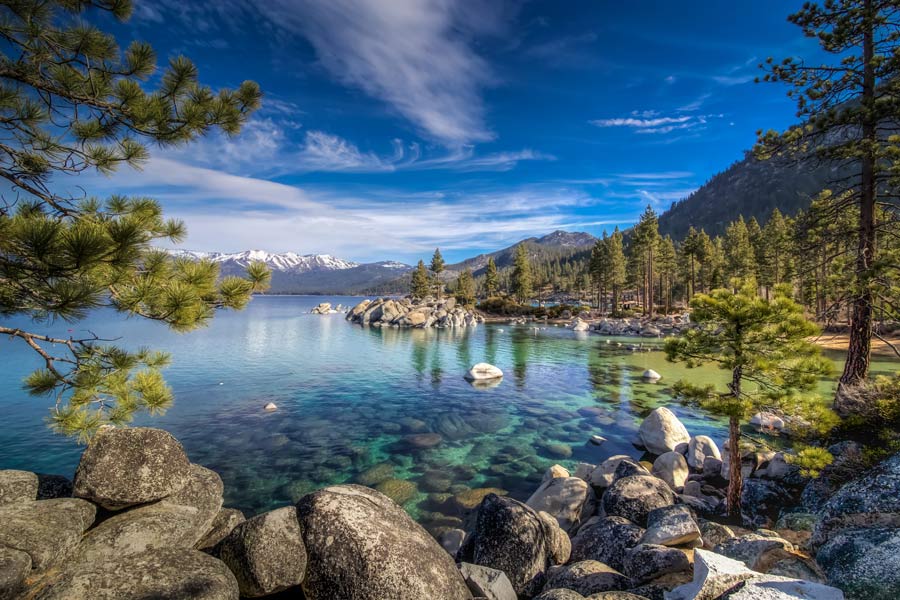Extreme forecasting: Vail Resorts officials say they’re assuming ‘a return to normal weather conditions’ this winter, but what does that mean?
Vail Daily

Provided/Heavenly
The timing wasn’t great — Vail Resorts officials, in a recent call to investors, said the company’s earnings forecasts for next season include “the assumed benefit of a return to normal weather conditions.”
But the call was taking place on Thursday afternoon, mere hours before Hurricane Helene would make landfall, reminding Americans that weather conditions in recent years have been anything but normal.
Vail Resorts CEO Kirsten Lynch and COO Angela Korch had some explaining to do for investors. It was the first time analysts could hear from Vail Resorts officials since the July 31 close of the 2024 fiscal year, and the company had missed its original earnings projections by more than $100 million.
Challenging weather conditions were one of the big factors in the missed target, Lynch said.
“Skier visitation declined 9.5% compared to the prior year, driven by unfavorable conditions across our resorts in North America and Australia,” Lynch said.
There was another factor at play, as well, Lynch said, something she called “industry normalization post-COVID” which occurred in 2023-24 “following record visitation in North America during the 2022-2023 ski season.”
But during that record visitation year, Vail Resorts also missed its original earnings projection and company officials also cited challenging weather conditions in explaining to investors why the company lowered its projection from the range of $893-$947 million, issued in December of 2022, to the range of $831-$859 million, issued in March of 2023.
A year earlier, in January 2022, Vail Resorts also said the season had gotten off to a slow start due to challenging early-season conditions that were worse than expectations.

In January 2021, Vail Resorts said snowfall levels were well below average at the company’s Colorado, Utah and Tahoe resorts through the holiday season, affecting visitation.
And in 2020, “Results at Whistler Blackcomb and Stevens Pass were below expectations, driven by the poor early season conditions that continued through the holiday period,” former CEO Rob Katz said at the time.
Despite this common refrain, Vail Resorts, when issuing its most recent revenue projections to investors, is still assuming that the weather will return to something it calls “normal.”
David Katz with Jeffries Investment Bank asked Lynch what “normal” means.
“How do we think about normal weather, and is there a new normal that we maybe should be thinking about?” David Katz asked.
“We always try to budget assuming normal,” Lynch said. “Normal means: Are there going to be some really good days? Are there going to be some really bad days? Are there going to be some windy days? Some icy days? Some cold days? Some high snow days? Some low snow days?”
All yes, Lynch said.
However, “We have no way of forecasting extreme weather,” she added. “We have no way of forecasting when it would happen or where it would happen. And so normal weather for us is factoring in weather variability, but something significant or extreme that happens, we really don’t have a way of forecasting that.”
While the company may not be assuming something extreme will happen in the near term on the weather front, it is banking on an extreme externality occurring in the overall climate in terms of greenhouse gas and the effects it’s having on the environment.
In a recent story in Bloomberg News, Lynch was quoted commenting on the company’s efforts to purchase more resorts, particularly in Europe, as a way to hedge against climate change.
“Geographic diversity helps with stability in the face of climate change,” Lynch said.
Brandt Montour with Barclays Investment Bank asked Lynch about those comments, asking if the company was pursuing mergers and acquisitions offensively or defensively these days.
“Does (diversification) change your return targets or underwriting hurdles when you think about what you’d be willing to pay for premier assets in Europe?” Montour asked.
Lynch said Bloomberg chose to focus on the diversification piece of her comments as if it were a new strategy.
“But actually, diversification and geographic diversification has been a part of our (mergers and acquisitions) strategy for a very long time,” Lynch said. “And we always factor that into our decision-making about acquisitions that we make — the impact of weather, where the resorts are located. And we will take that same approach in Europe as well, factoring that in and trying to make sure as we expand and grow there, that we are taking into consideration the geographic location or the impact of weather and climate change in the resorts that we’re interested in acquiring.”

Support Local Journalism

Support Local Journalism
Readers around the Lake Tahoe Basin and beyond make the Tahoe Tribune's work possible. Your financial contribution supports our efforts to deliver quality, locally relevant journalism.
Now more than ever, your support is critical to help us keep our community informed about the evolving coronavirus pandemic and the impact it is having locally. Every contribution, however large or small, will make a difference.
Your donation will help us continue to cover COVID-19 and our other vital local news.









